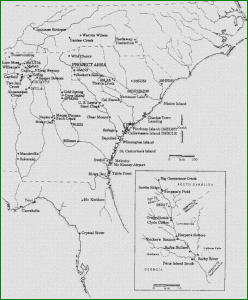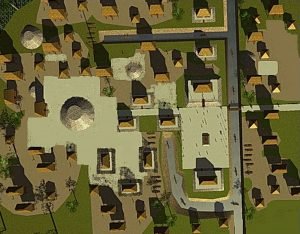Wakate – Guacata Town
Around the year 900 AD, the provinces of the Calusa, Mayaimi and Tekesta in southern Florida merged into one political entity that was the scale of a nation. Almost immediately, the same styles of pottery were being produced in all three provinces, and the Mayaimi town of Wakate (Guacata in Castilian) began to grow rapidly. This archaeological zone is also known as Belle Glade Mounds. It is located in Palm Beach County, Florida. The location of Wakate was at the base of a peninsula that extended into the southeast corner of Lake Okeechobee. Canoes departing from Wakate could access all … Read more



